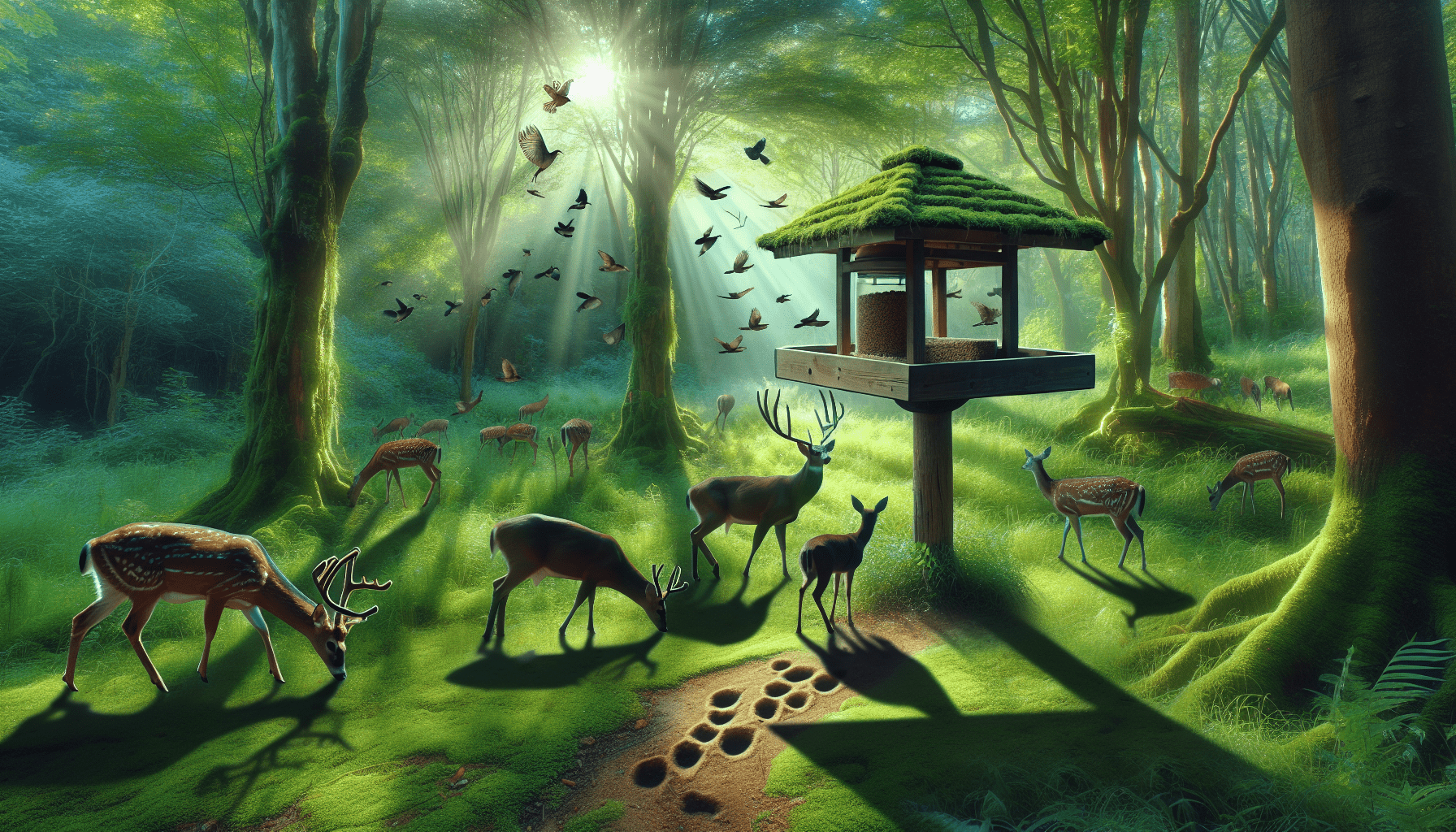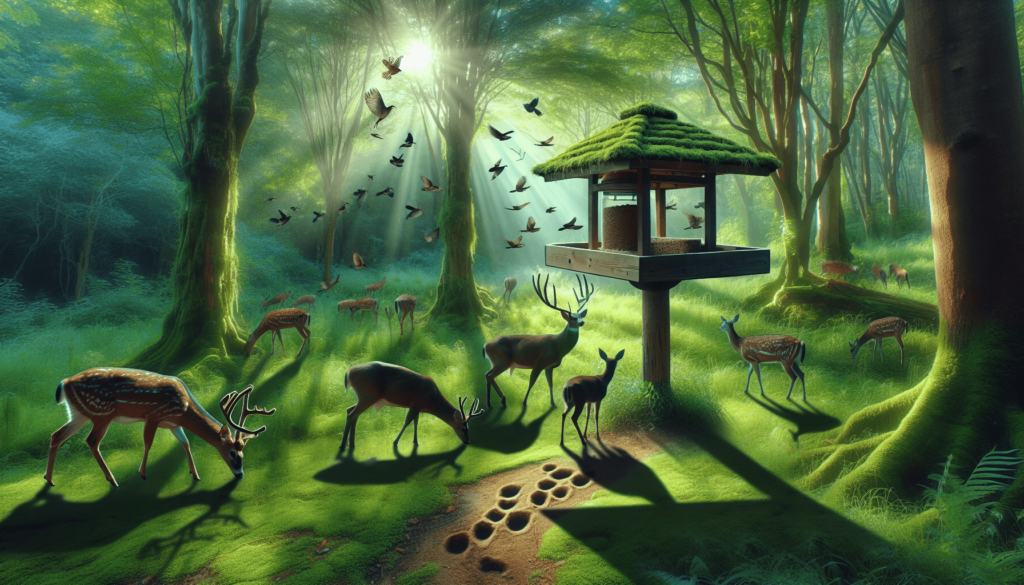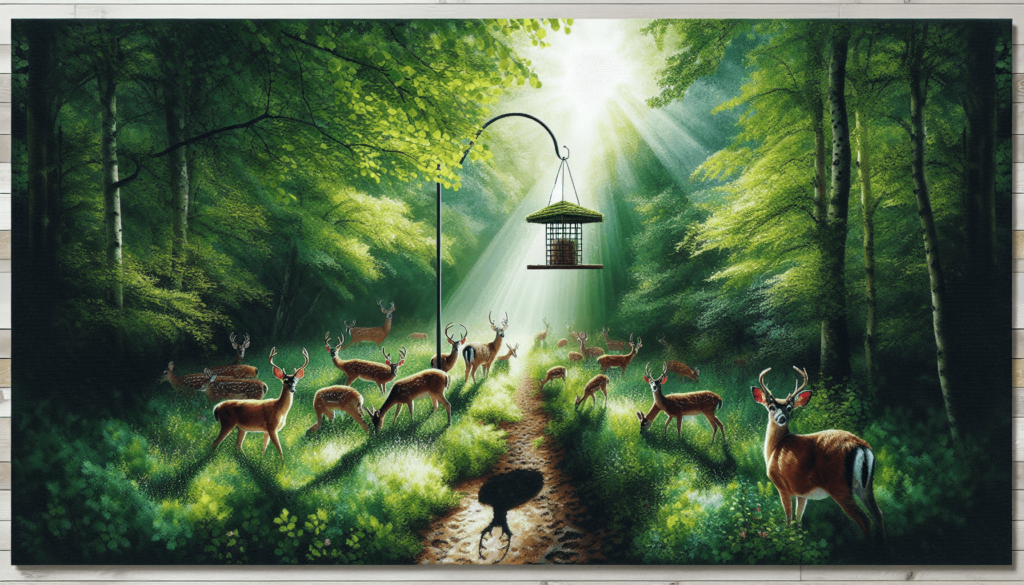
What if you could increase your chances of seeing deer in your own backyard? A well-placed feeder can make a world of difference when it comes to enhancing deer activity and observation. Let’s explore the ins and outs of optimal feeder placement together, so you can create an inviting environment for these graceful creatures.
Understanding Deer Behavior
To appreciate how feeder placement can impact deer activity, it’s important to understand a bit about their behavior. Deer are crepuscular animals, meaning they are most active during dawn and dusk. This knowledge is crucial when considering when and where to place your feeder.
Seasonal Patterns
Deer activity varies by season, influenced by food availability and mating behavior. During late summer and early fall, deer are often foraging extensively to prepare for winter. Placing feeders in known foraging areas during this time can increase your chances of observation.
Learning Their Trails
Establishing a pattern of movement for deer in your area can help you position your feeder more effectively. Watch for game trails—these are consistent paths deer take as they travel from bedding areas to feeding zones. Your feeder should ideally be near these trails to draw deer in naturally.
Choosing the Right Location
The location of your feeder is paramount for attracting and observing deer. You want to think about a few key factors.
Cover and Concealment
Deer are prey animals that rely on their instincts to survive. This makes cover essential—you can attract more deer by placing your feeder near natural cover like bushes or trees. This proximity provides deer with a sense of security as they approach the feeder.
Distance from Human Activity
It’s important to consider the human activity in your vicinity. Deer tend to shy away from areas with high noise levels or frequent human presence. Position your feeder away from trails, roads, and noisy machinery. A quiet, peaceful spot will help keep deer coming back regularly.
Sunlight Exposure
While deer are crepuscular, they still appreciate warmth, particularly during colder months. Placing your feeder in a spot that receives morning sunlight can make it more appealing, as deer often seek warmth before heading out to forage.

Types of Feeders
Not all feeders are created equal. The type of feeder you choose can affect deer visitation rates, so let’s break down a few options you might consider.
Gravity Feeders
Gravity feeders are a popular choice. They allow deer to access feed easily, and you can fill them with corn, pellets, or other deer feed without worrying about the feed spilling. These feeders are adjustable, letting you set them at a height that’s comfortable for deer—generally 36 to 42 inches off the ground.
Automatic Feeders
If you’re looking to maximize observation opportunities, automatic feeders might be worth considering. They dispense feed at predetermined times, drawing deer into the area consistently. Just keep in mind that you’ll need a reliable power source for these feeders, and they often require more maintenance to keep them functioning properly.
Hanging Feeders
If you need to deter larger animals, hanging feeders can be an effective solution. These can be positioned at heights that keep food out of the reach of raccoons and other non-target critters while still being accessible to deer.
Feeding Considerations
Once you have your feeder in place, the next step is deciding what to fill it with. The right food can attract deer while also promoting their health.
Nutritional Needs
Deer require a balanced diet to thrive, especially throughout different seasons. In early spring, they need high protein feed to support fawn development, while in late fall they may benefit from higher carbohydrate feed to build fat reserves. It’s smart to adjust what you put in your feeder based on the time of year.
Supplementation
In addition to standard feeds like corn, consider adding supplements like minerals and vitamins to help support deer health. Many hunters use mineral blocks, available at most outdoor supply stores, to enhance the nutritional value of the feed you’re providing.
Feeding Frequency
Consider how often you refill your feeder. Regular visits ensure that the feeder is always accessible to deer. This is important, especially if you’re trying to observe them regularly. An empty feeder can deter deer from returning, so plan to check your feeder frequently.

The Role of Water Sources
While feeding is essential, don’t overlook the importance of water. Deer need water to survive, especially in warmer months. If you have the space, consider adding a water source close to your feeder.
Types of Water Sources
There are different ways to create water sources for deer. A simple option is to set up a shallow pond or water trough nearby. Rainwater can also collect in a large bowl or barrel; just make sure it remains clean to encourage use.
Placement
Just as with your feeder, the water source should be easily accessible but well-concealed. Position it in a shady area to keep the water cool and attractive during the heat of the day.
Timing Is Key
Your approach to observation is another crucial aspect in enhancing deer sighting opportunities.
Early Morning and Late Evening
As previously mentioned, deer are most active during dawn and dusk. Planning your observation times around these periods can increase your chances of seeing deer visit your feeder.
Patience is a Virtue
Sitting quietly and patiently is often necessary when you’re observing deer. The more time you spend in their environment, without disturbance, the more comfortable they will become with your presence.
Using Technology for Better Observation
In the modern age, you can use technology to maximize your deer-watching experience.
Trail Cameras
Installing trail cameras near your feeder can provide insight into deer patterns, as well as the wider range of wildlife in your area. These cameras can capture images day and night, allowing you to keep track of deer activity without being present. Check them regularly to monitor what times of day are most active.
Smartphone Apps
Many smartphone apps are designed to track deer movements and behaviors. Some allow you to log sightings and even predict where deer will be based on past data. These can enhance your observation strategy.
Understanding Deer Whitetail Communication
Understanding deer behavior also means recognizing their communication methods.
Body Language
Deer communicate through body language. Watch for signs such as raised tails, ears laid back, or movements towards a specific direction. This will help you interpret what they might be feeling and whether they are relaxed enough to approach your feeder.
Vocalizations
Deer also make various sounds, especially during the mating season. If you hear grunts, bleats, or snorts, it’s a good indication that deer are around.
Safety and Regulations
As with any wildlife management initiative, safety and ethics are paramount.
Local Laws and Regulations
Before placing feeders, check your local laws and regulations regarding deer feeding. Some states have strict rules to avoid dependency or the spread of diseases. Understanding these regulations is essential for safe feeding practices.
Safety Precautions
If you’re hunting as part of your observation, safety should always come first. Following the rules and guidelines ensures the safety of you and others in the area.
Creating an Enjoyable Environment
Enhancing your deer observation experience isn’t just about the feeder placement; it’s also about creating an inviting environment for both you and the deer.
A Comfortable Observation Area
Set up a comfortable spot nearby where you can sit and watch. Bring a chair, some snacks, and drinks—make it a peaceful gathering spot.
Minimizing Disturbances
When you’re out observing, try to keep noise and movement to a minimum. This helps maintain a sense of security for the deer, making it more likely they’ll return again.
Conclusion
As you work on optimizing your feeder placement, remember this is a journey built on observation and patience. Each deer visit adds to the story of your outdoor space. By understanding deer behavior, carefully choosing your feeder’s location, and taking the time to create an inviting environment, you can significantly enhance your chances of experiencing these majestic animals in action.
By being mindful of the nuances involved in deer feeding and observation, you create not just a feeding ground but a flourishing ecosystem that enhances the presence of wildlife in your surroundings. The excitement of watching deer come to your carefully placed feeder is an experience like no other. So grab that feeder, choose your location wisely, and enjoy those peaceful moments in nature.





